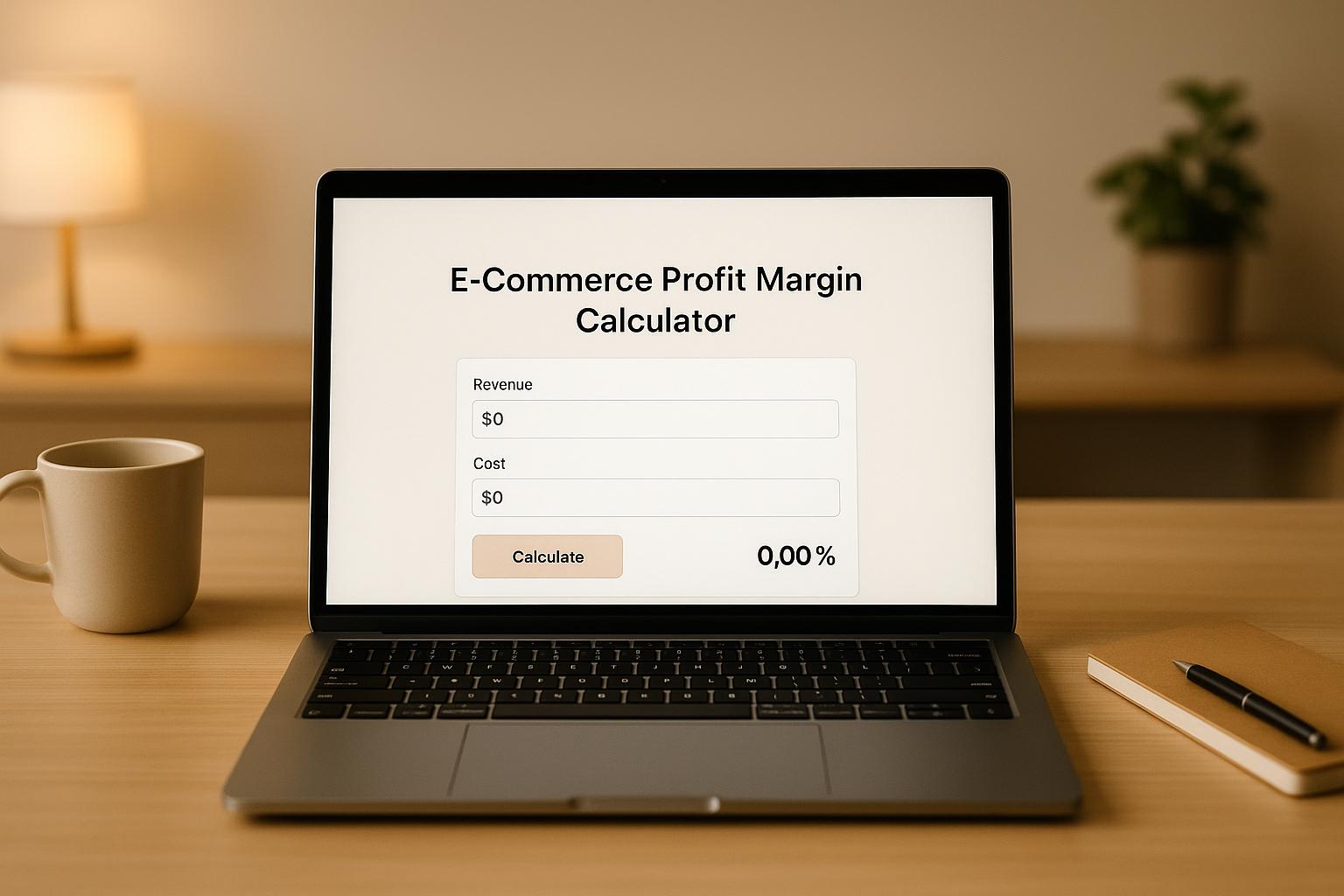AI for Localized Product Attributes
AI is transforming how businesses tailor product information for global markets. Instead of relying on slow, manual processes, companies can now use AI to quickly adjust product descriptions, measurements, currencies, and even cultural nuances to meet local preferences and regulations. This shift improves customer experience, reduces errors, and boosts sales.
Key Highlights:
- Manual Localization Challenges: Time-consuming, error-prone, and inconsistent results.
- AI Solutions: Automates translations, adapts data for local standards, and ensures compliance.
- Proven Results:
- Cuts time-to-market by 50%.
- Reduces labor costs by 40%.
- Boosts conversion rates by 25%.
- US Market-Specific Adjustments: AI formats data to match US standards (e.g., imperial units, $ currency, MM/DD/YYYY dates).
AI-driven localization is essential for businesses aiming to expand globally while maintaining accuracy and efficiency. Platforms like Feedcast simplify the process by automating updates, ensuring compliance, and tailoring content to regional needs, including the competitive US market.
AI and Localization: Beyond Cost-Saving
How AI Improves Product Attribute Localization
AI tackles localization challenges head-on by simplifying the process of adapting product attributes for global markets. It automates tasks like translation, currency conversion, and measurement adjustments, ensuring products meet local standards. This efficiency paves the way for deeper customization, allowing businesses to fine-tune their offerings to align with cultural nuances while maintaining brand consistency across regions.
AI-Powered Automation for Localization
One of AI's standout strengths is its ability to handle repetitive, time-consuming tasks that previously required weeks of manual effort. From translating content and converting currencies to adjusting measurements, AI systems streamline these processes with impressive speed and accuracy.
Take Life360, for example. The company localized its app into five languages in just one month, slashing both time and costs - cutting expenses by 80%, according to its Localization Manager [1]. Similarly, NEYE used AI tools to translate its entire product catalog into Swedish in only 24 hours [4]. Compare this to traditional translation costs, which average $0.22 per word [1], and the advantages of AI become clear: faster results at a fraction of the cost.
Beyond translation, AI ensures specifications, measurements, and prices are automatically adapted to suit regional standards. For instance, it converts metric measurements to imperial for U.S. markets, formats prices in local currencies, and ensures compliance with regional regulations - all without the need for multiple rounds of manual review. This comprehensive automation significantly reduces errors and accelerates the localization process.
Adapting to Regional and Language Differences
AI goes beyond basic translation to address the cultural and linguistic subtleties that are crucial for successful international product launches. Leveraging large language models (LLMs) trained on extensive datasets, AI delivers culturally relevant content that connects with local audiences [1].
Rather than sticking to word-for-word translations, AI analyzes language nuances, cultural preferences, and consumer behaviors. This allows it to tailor product descriptions, adjust pricing strategies based on local economic conditions, and even customize user interfaces to reflect regional norms [2]. For example, a global fashion retailer used AI to adapt product descriptions and marketing copy across multiple markets, resulting in a 25% increase in conversion rates through highly localized content [9].
The impact of AI's cultural adaptation capabilities is further highlighted by ITC's work with multinational corporations. In one instance, an AI-powered chatbot was localized for Japan, incorporating respectful honorifics and indirect phrasing typical of Japanese business culture. This adjustment led to a 35% boost in customer satisfaction [8]. Similarly, tailoring prompts for French and Spanish audiences using idiomatic expressions improved booking rates by 25% [8].
AI also identifies potentially sensitive words or phrases and suggests culturally appropriate alternatives for product descriptions and slogans [9]. Additionally, AI-driven sentiment analysis evaluates how messages will be received in different markets, helping businesses strike the right tone, refine humor, and use idioms effectively to connect with local audiences [9].
Better Consistency and Fewer Errors
One of the key advantages of AI-powered localization is its ability to maintain consistent terminology, tone, and style across all markets. Unlike traditional methods, which often lead to inconsistencies when multiple translators are involved, AI employs centralized terminology databases, style guides, and translation memories. This ensures that every piece of content aligns with brand standards [1][3].
AI also dramatically reduces errors in the localization process. For instance, a global apparel retailer implemented AI tools for attribute mapping, which reduced tagging errors by over 70% and sped up the conversion of unstructured supplier data into standardized formats by 80% [5]. Similarly, AI systems can cut manual data entry by up to 90%, freeing teams to focus on strategic priorities [5][6].
Another major benefit is continuous quality monitoring. AI scans content in real time, flagging inconsistencies, exaggerated claims, or potential regulatory issues before the content reaches customers [7]. This proactive approach helps prevent costly mistakes while ensuring that localized product attributes consistently meet high standards.
With its ability to deliver speed, accuracy, and scalability, AI has become an indispensable tool for businesses aiming to expand their reach in global markets.
Localization Requirements for the US Market
Breaking into the US market isn’t just about translating your content - it’s about understanding and aligning with the expectations of American consumers and adhering to specific regulatory standards. AI-powered localization tools are particularly adept at fine-tuning product details to meet these requirements, giving businesses a competitive edge in one of the world’s largest e-commerce markets. Let’s explore how these tools address US-specific standards.
Key US Localization Standards
The US has its own unique formatting rules, and getting these right is crucial for building trust with consumers. For starters, currency formatting in the US uses the dollar sign ($) placed before the amount, with commas separating thousands and periods for decimals. For example, $12,345.67 is the correct format.
Dates are another area where precision matters. Americans use the MM/DD/YYYY format, so 03/05/2025 represents March 5, 2025. This differs from many other regions, such as Europe, where the same format would indicate May 3, 2025 [10].
Measurement units in the US follow the imperial system - think inches, feet, pounds, and ounces. Temperatures are measured in Fahrenheit, not Celsius.
Language preferences go beyond just translating words. American English spelling is essential. For example, “color” replaces “colour,” “organize” takes the place of “organise,” and “catalog” is used instead of “catalogue.” These subtle differences can significantly impact how authentic and trustworthy your brand feels to US consumers.
Even number formatting has its own rules. In the US, 12,300 in scientific notation would appear as 1.23 x 10^4, while in Germany it’s written as 1,23 x 10^4 [11]. These details are critical for AI tools to adapt product data seamlessly for US audiences.
Adapting Product Data for US Consumers
AI tools go beyond basic localization by tailoring product data to align with both regulatory and cultural expectations in the US. From formatting addresses and dates to using the correct currency and design elements, these tools ensure everything feels “local.” As Product Localization Expert Ellen Merryweather explains:
"For a new target audience to trust and buy your product, it has to look and feel local too. This includes using local address and date formats, displaying the correct currency and units of measure, choosing appropriate colors and graphics, and much more" [12].
This is especially important given that up to 60% of non-native English speakers rarely or never purchase from English-only websites [12]. Localization, therefore, needs to go beyond language to include cultural and functional adjustments.
AI systems excel at automating these adjustments. For instance, they can convert measurements, format dates, and adjust currencies in real-time to meet US standards. Using geolocation or browser settings, AI can detect a user’s location and automatically display product dimensions in familiar units. Dates are often stored in a universal format, like ISO 8601, and then converted for display based on the user’s locale [11].
Regulatory compliance is another area where AI proves invaluable. The Federal Trade Commission (FTC) closely monitors AI applications to ensure they meet legal standards. FTC Chair Lina Khan has made it clear:
"There is no AI exemption to the laws on the books, and the FTC will vigorously enforce the law to combat unfair or deceptive practices or unfair methods of competition" [13].
Recent enforcement actions highlight this commitment. In May 2025, the FTC proposed an order against Workado, LLC, barring the company from advertising the accuracy of its AI detection products without proper evidence. The FTC found that Workado’s AI Content Detector, marketed as 98% accurate, only achieved a 53% accuracy rate on general-purpose content [14].
AI localization tools help businesses avoid such regulatory pitfalls by ensuring claims are backed by solid evidence and offering transparency about AI usage in product descriptions [14]. These tools can also streamline practical elements, like formatting phone numbers with dropdowns for country codes or clearly displaying currency to eliminate confusion in international transactions [11].
sbb-itb-0bd1697
AI Workflow for Localized Product Attribute Management
AI is revolutionizing the way businesses localize product attributes, making global expansion smarter and more efficient. By automating the transformation of raw product data into content that resonates across different regions, AI enables companies to deliver culturally relevant and market-ready material at scale.
Complete Workflow for Localization
The AI-driven localization process unfolds in five interconnected stages, combining automation with human expertise. This synergy ensures both efficiency and cultural relevance.
Data Collection: This is the starting point. AI gathers product details, customer feedback, and market trends from diverse sources. Human curators step in to verify and fine-tune the data, ensuring accuracy - a critical foundation for effective AI performance.
Content Drafting: AI takes the lead in translating, adapting, and localizing content. However, human experts review the output to ensure it aligns with cultural nuances and brand identity. This collaboration ensures that product descriptions go beyond basic translations, capturing the intended tone and meaning for each market.
Content Deployment: Once the localized content is ready, the system updates websites, apps, and marketing channels simultaneously. Final human verification ensures everything is polished and ready for launch.
Real-Time Adjustment: Unlike traditional methods, AI dynamically updates content based on customer reactions, social trends, and market performance. Human experts oversee strategic updates, ensuring they align with broader goals.
Performance Monitoring: AI analyzes data on engagement, sales, and customer feedback. Human experts interpret this data to refine future localization strategies and maintain a competitive edge.
Each stage includes critical human oversight to maintain quality while leveraging automation for efficiency. This workflow ensures localized content remains consistent, culturally sensitive, and adaptable to changing market needs.
Localization expert Julio Madrid highlights the importance of balancing automation with human input:
"For high volume, lower-risk content, user-generated content or support documentation for teams, automated translation with human post-editing can dramatically increase quality, increase revenue, and save money… So for me, the trick is pairing the robust quality that you can get with implementing AI together with a set of human eyes" [16].
Real-world examples showcase the power of this approach. A fashion retailer used AI to tailor marketing messages to local trends, achieving campaign launches three times faster, a 40% boost in regional engagement, and a 35% cut in localization costs [15]. Similarly, an electronics manufacturer leveraged AI to localize firmware updates and support content, halving product update cycles while improving customer satisfaction and maintaining compliance [15].
Comparison: AI-Driven vs. Manual Localization
When comparing AI-driven localization to traditional manual methods, the advantages of automation become clear. Companies using AI have doubled their speed of updates, cut costs by up to 50%, and significantly improved customer satisfaction [15].
| Aspect | Manual Localization | AI-Driven Localization |
|---|---|---|
| Speed | Weeks to months for market entry | Days to weeks for market entry |
| Cost Reduction | Baseline costs | Up to 50% reduction |
| Time to Market | Standard timeline | Accelerated |
| Error Rates | Variable, based on expertise | Up to 50% fewer translation errors |
| Scalability | Limited by team size | Scales across multiple markets |
| Consistency | Varies with individual performance | Uniform terminology and style |
| Cultural Adaptation | Relies on individual expertise | Systematic integration of cultural insights |
Speed is a game-changer in competitive industries. For instance, an e-commerce platform used AI to localize product descriptions, pricing, and legal content, enabling it to enter new markets within weeks rather than months. This resulted in a 30% increase in regional sales and lower translation costs [15].
AI also ensures consistency by drawing from extensive databases of language and cultural knowledge, maintaining uniformity across all markets [17]. In contrast, manual localization often varies depending on individual translators' skills and availability. Additionally, while traditional methods require scaling up human resources for each new market, AI systems can handle multiple languages simultaneously, making global expansion faster and more efficient.
This shift allows businesses to adapt to market changes, fine-tune content based on performance, and maintain cultural relevance - all at a scale that manual processes simply cannot achieve.
How Feedcast Supports Localized Product Attributes

Feedcast simplifies the process of managing localized product attributes across major advertising platforms. By leveraging AI, it removes traditional hurdles that often slow down global expansion efforts. At the same time, it ensures that products adhere to the specific requirements of each market. This efficient process enables detailed product data enhancement and smooth feed management.
Feedcast's AI-Driven Product Data Enrichment
Feedcast uses its AI engine to refine product data, tailoring it to meet regional standards and improve ad performance. The system adjusts content to reflect local preferences, cultural nuances, and terminology that resonate with specific audiences.
For example, in the US market, Feedcast ensures product descriptions follow American English spelling, include familiar terms, and emphasize features that appeal most to American shoppers. The platform also adapts content length and format to fit the requirements of various advertising platforms.
- Google Shopping listings are optimized with clear, descriptive titles designed to match search intent.
- Facebook and Instagram posts are fine-tuned with attributes that appeal to specific demographic groups.
Additionally, Feedcast's AI handles category mapping, ensuring products are aligned with platform-specific categories that match consumer expectations in the US. This alignment helps brands connect with their target audience more effectively.
Unified Management of Product Feeds
Feedcast brings simplicity to managing localized product feeds by centralizing everything in one dashboard. This unified approach allows businesses to oversee campaigns across platforms like Google, Facebook, Instagram, Microsoft Ads, and more - all from a single interface.
The platform supports data imports from popular e-commerce platforms like Shopify, WooCommerce, and PrestaShop, as well as file formats like Google Sheets, CSV, and XML. Once imported, product updates are automatically synchronized across all connected channels, eliminating the need for manual updates.
Feedcast also monitors feeds in real time, identifying and addressing common issues such as missing fields, invalid currency formats, or incorrect image specifications. Problems like inconsistent GTIN formats or images not meeting platform standards (e.g., 600x600px) are flagged and often corrected automatically. Inventory data is also updated in real time to ensure stock information remains accurate.
Another standout feature is custom labels management, which allows businesses to segment products and adjust advertising budgets based on specific rules. This is particularly useful for targeting different audience segments in the US or modifying strategies for seasonal items or regional preferences.
US Market-Specific Benefits with Feedcast
Feedcast goes a step further to cater specifically to the US market, ensuring that product listings meet all necessary standards and consumer expectations. The platform automates key adjustments like converting prices to dollars, switching measurements to imperial units, and applying American English conventions.
The system also tracks performance metrics tailored to US consumer behavior, such as click-through rates, conversion rates, and search term data. If certain product descriptions fail to connect with American shoppers, the AI adjusts keywords and categorization to improve engagement.
| Platform | US Market Optimization |
|---|---|
| Google Shopping | Aligns with American search habits and shopping behaviors |
| Microsoft Ads | Tailors content to Bing's US audience demographics |
| Facebook/Instagram | Customizes listings for American social media users |
Feedcast ensures compliance with US standards, including safety disclosures and legal requirements. It flags products that might need additional documentation or warnings, helping businesses avoid compliance risks.
The platform's real-time adjustment capabilities adapt to American market trends and seasonal events. For example, during Black Friday or back-to-school shopping periods, Feedcast automatically optimizes product listings and messaging to align with consumer expectations and search trends unique to those occasions.
Conclusion
AI has revolutionized how businesses handle product attribute localization, simplifying what was once a labor-intensive and error-prone process. By tackling challenges like inconsistent data, regional mismatches, and overwhelming manual workloads, AI has become a driving force behind smoother global market expansion.
The results speak for themselves. Recent data shows that 88% of content decision-makers are already leveraging generative AI for translations [18]. Companies using AI localization platforms have also reduced manual localization costs by up to 60% [18].
But the benefits go beyond cost savings. AI adoption is linked to stronger financial performance. Businesses using AI technologies have reported an average revenue growth of 12%, compared to just 8% for non-adopters. Additionally, these companies have seen an average cost reduction of 15%, thanks to automation and improved efficiency [20]. For example, Celonis used AI-powered localization tools to slash translation times by 70% and cut their time to market in half [20].
Key Takeaways
AI-driven localization delivers tangible results across several fronts:
- Speed: Traditional localization timelines of 4–6 weeks are now reduced to just days [18].
- Accuracy: AI achieves quality metrics as precise as one error per 1,000 words [18].
- Scalability: Businesses can manage massive content volumes while maintaining consistency across global markets.
For U.S. market entry, AI localization ensures product data aligns with critical local requirements, such as currency conversion and imperial measurements, making it easier to succeed in this competitive space.
Companies like Feedcast are leveraging AI to adapt product data for regional preferences, ensuring listings meet platform-specific standards. From category mapping to real-time inventory updates, AI handles it all, streamlining operations while maintaining compliance across major sales channels.
The market for AI-powered localization tools is also growing rapidly. Valued at $5 billion in 2025, it's projected to expand at a 25% compound annual growth rate, reaching $25 billion by 2033 [18]. This growth underscores AI's role not just as a cost-cutting tool but as a strategic asset for global expansion.
To make the most of AI localization, businesses should adopt a hybrid strategy - using AI for high-volume tasks while relying on human oversight to fine-tune brand voice [18]. Choose platforms with strong integration capabilities, and maintain detailed glossaries and style guides to optimize AI performance [19]. By combining automation with thoughtful strategy, companies can unlock the full potential of AI localization.
FAQs
How does AI ensure accurate and consistent product attributes for different markets?
AI plays a crucial role in improving the accuracy and consistency of localized product attributes by automating essential tasks like translations, adapting measurements to fit regional standards, and applying uniform taxonomies. These processes help reduce human error and ensure product data meets local market and cultural expectations.
For example, AI can handle tasks such as converting units (like inches to centimeters) and customizing product descriptions to resonate with specific audiences. By doing so, product listings become more relevant and appealing to global customers. This automation not only saves time but also boosts precision and allows businesses to scale their operations more effectively.
What challenges do businesses face when tailoring product attributes for the US market, and how can AI help?
When businesses tailor product attributes for the US market, they often face hurdles like ensuring local relevance, delivering precise translations, and keeping a cohesive brand identity. AI helps tackle these challenges by providing context-sensitive translations that honor cultural subtleties, making product descriptions more relatable to American audiences. Additionally, advanced language models ensure your brand's tone and style remain intact, while simplifying data management to enhance both accuracy and consistency.
How can businesses use AI to localize product attributes while ensuring cultural sensitivity and brand consistency?
Businesses are turning to AI to simplify the process of localizing product attributes. However, striking the right balance between automation and human oversight is essential to preserve both cultural sensitivity and brand consistency. Regular input and reviews from local experts play a key role in ensuring AI-generated content aligns with regional norms and reflects the brand's values accurately.
For better results, companies should set clear guidelines for their AI systems and implement feedback loops to refine outputs over time. Collaborating with local communities or specialists during the development process can also help create content that feels genuine and connects more effectively with the target audience.
Geoffrey G.




